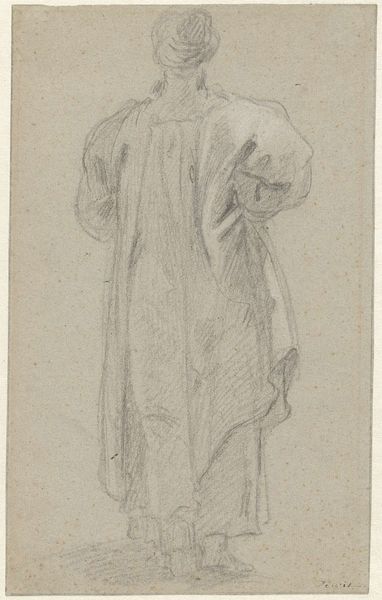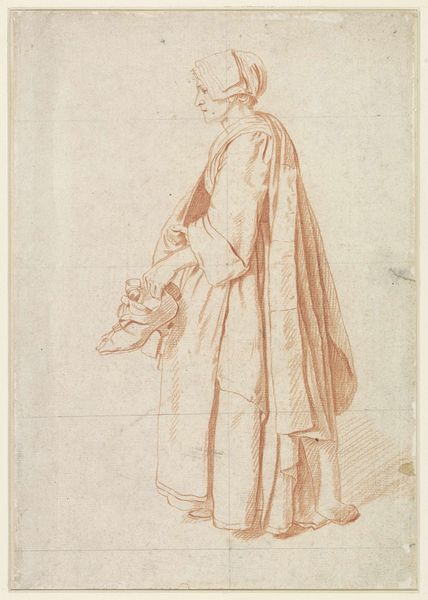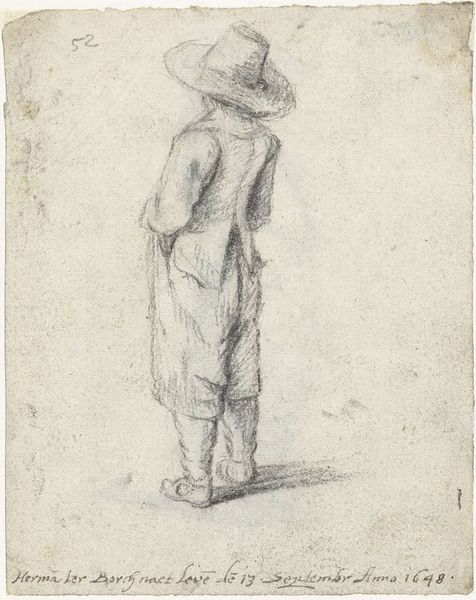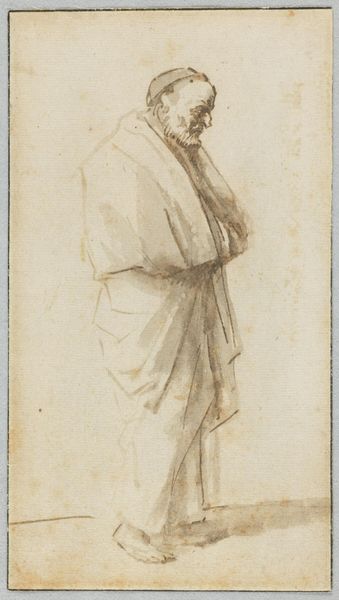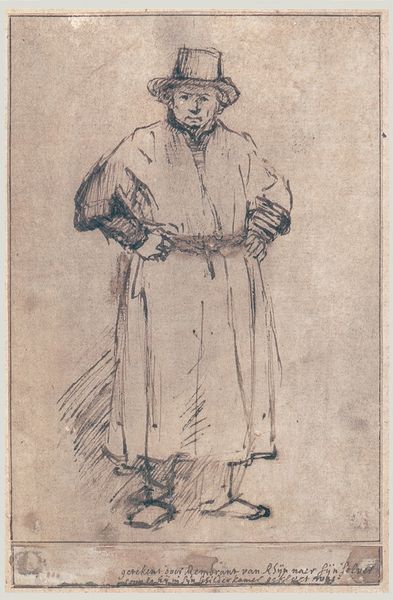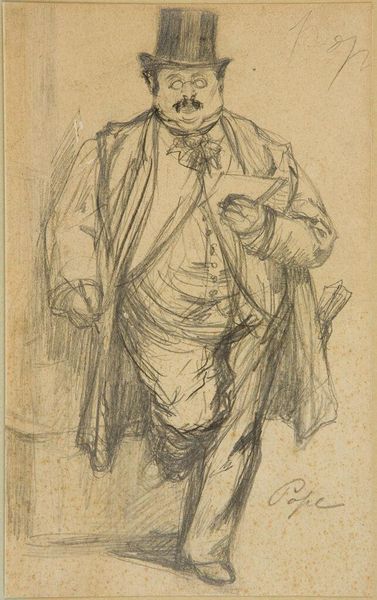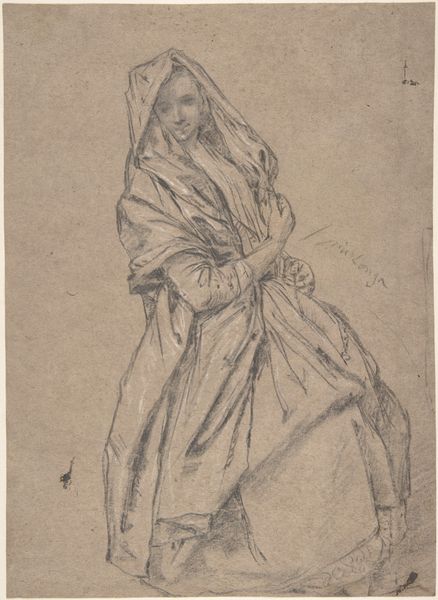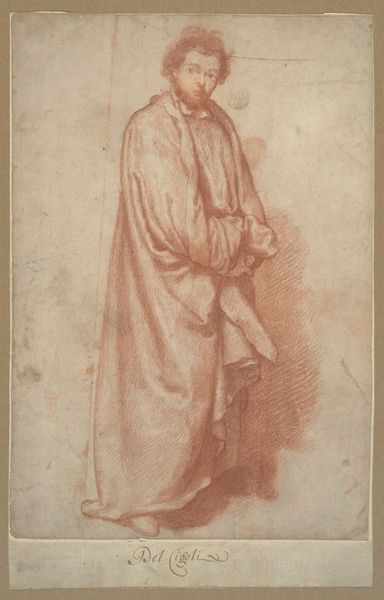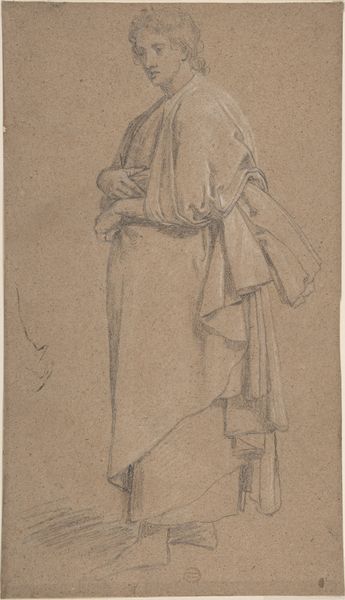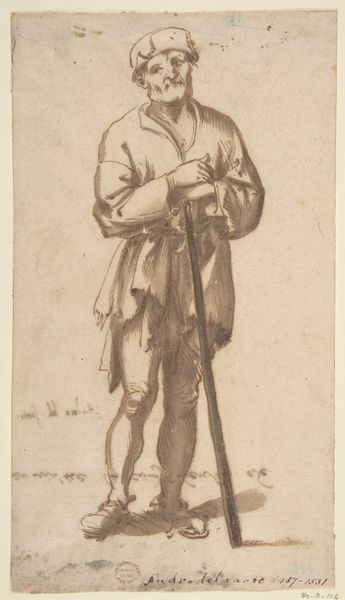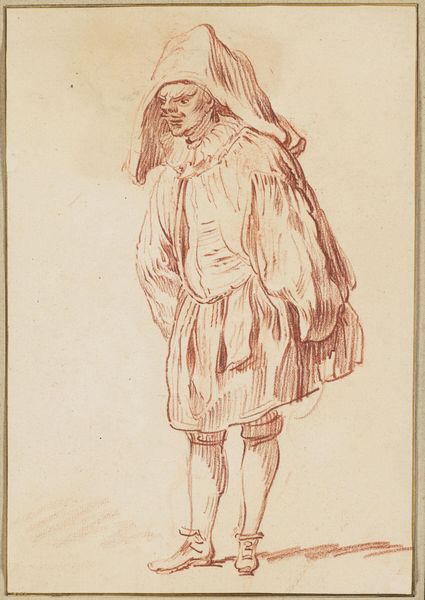
Karikatuurportret van de kunstschilder Theophile de Bock 1870 - 1899
0:00
0:00
elchanonverveer
Rijksmuseum
drawing, pencil
#
portrait
#
pencil drawn
#
drawing
#
dutch-golden-age
#
impressionism
#
pencil
#
realism
Dimensions: height 557 mm, width 400 mm
Copyright: Rijks Museum: Open Domain
Editor: Here we have Elchanon Verveer's "Karikatuurportret van de kunstschilder Theophile de Bock," made sometime between 1870 and 1899. It's a pencil drawing, currently residing at the Rijksmuseum. The shading creates an overall somber mood. What strikes you about it? Curator: The beauty, and potential for analysis, rests in the use of pencil. We're talking about readily accessible material, humble even, to depict a fellow artist. Consider the societal position of artists at that time – were they celebrated, struggling, or somewhere in between? And how does the deliberate use of such a common material reflect on the subject, Theophile de Bock, and his own artistic practice? Editor: That’s a fascinating point about the pencil. It seems to democratize the artistic process. Were portraits often done in pencil? Curator: Initially, portraiture might call to mind more luxurious materials – oils for the wealthy, perhaps. So, using pencil begs the question: why this choice? Was it about accessibility, speed, or perhaps a deliberate commentary on the romanticized idea of the artist? Think of the labour involved; pencil drawing is immediate yet demanding in terms of control. And what is this saying, in turn, about the painter de Bock and Verveer's social circle? What did "being an artist" signify at the time for Dutch society? Editor: It’s interesting to think about how the materials themselves contribute to the story being told. I hadn't considered the social implications. Curator: Exactly. The means of production here speaks volumes. How does the choice of a common material change your initial impression? Editor: I think I see it less as a somber depiction now, and more as an artist representing an artist using a common language they both understand. It really shifts my perspective on the whole artwork. Thank you!
Comments
No comments
Be the first to comment and join the conversation on the ultimate creative platform.
